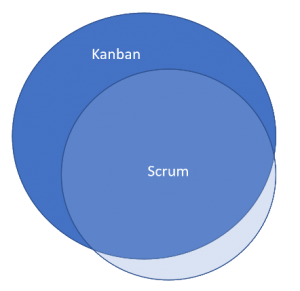By Mark Schaefer, Published November 12, 2014

It’s that time of year when many people are solidifying their annual plans for the upcoming year.
Early in my career, my company required me to submit annual forecasts for the next five years of sales for our accounts! In the fast-moving world of today, that might seem strange but just how far into the future should we plan? How much is it POSSIBLE to plan today?
Here is my company marketing strategy: Assess, React and Shift.
Every month.
No annual marketing strategy? That sounds pretty weird coming from a professional marketing strategist, doesn’t it?
But we are in a crazy, crazy world. Not only are the marketing platforms changing all the time, the rules of engagement are changing, too.
- For example, the founders of Twitter never dreamed of the many creative and amazing ways Twitter is being used. It is the de facto “second screen” for TV viewing. It a powerful research tool. It is where news breaks. It has added powerful new advertising features. I could go on and on.
- In the last year, Pinterest has emerged as a successful source of blog traffic.
- Instagram has become a popular way to promote recipes in the last few months.
- Snapchat is now being used to deliver daily deals and coupons.
- I even heard of new ways the dating site match.com is being cleverly used as a social media marketing channel!
My point is, if we are locked into any kind of a long-term social media marketing strategy, we risk rapid obsolescence, or at least overlooking new opportunities.
A better model for strategic planning
A more accurate model for strategic marketing planning is an American football game.
In a football game, a primary method of advancing the ball is to hand the ball to a strong and swift player called a running back. The idea is to create a “hole” in the defense so the the running back can take advantage of the opportuniy to sprint through and pick up as much ground as he can until the competition eventually stops the advance.

Before the game, the team has a general outline of what needs to be done to win, but adjustments are made continually throughout the game. In fact, after each play, the team re-groups to consider where another hole might be created.
I think this is how we need to think about business strategy today. As long as we are in the game, we need to be looking for “holes” or points of strategic leverage. We need to charge through those holes as fast as we can and gain ground until the competition figures it out, whether that is a few months or a few years.
Meanwhile … even as this is happening … we need to be looking for the next hole, the next point of leverage. Strategy development becomes a continuous process.
A three dimensional strategy model
This is very different from the popular Porter five forces model of sustainable competitive advantage. But then again, Michael Porter’s company went bankrupt in 2012! Maybe we all need to look at things differently.
Like the running back running through a hole, our successful strategy is three-dimensional, a function of:
SPACE — What is the point of strategic leverage?
TIME — How long will the space exist?
SPEED — How fast can we run though the gap and maintain the pace ahead of our competitors?
In an ideal world, a strategic committee would review these dimensions constantly and revise as needed depending on the structure of the business.
How does this idea land on you? Unnerving? On target? Wrong? Let me know in the comment section.
Mark Schaefer is an educator and marketing consultant specializing in social media workshops. He blogs at {grow} and is the author of several best-selling marketing books including Return On Influence.
Business Articles | Business 2 Community
(303)
Report Post







